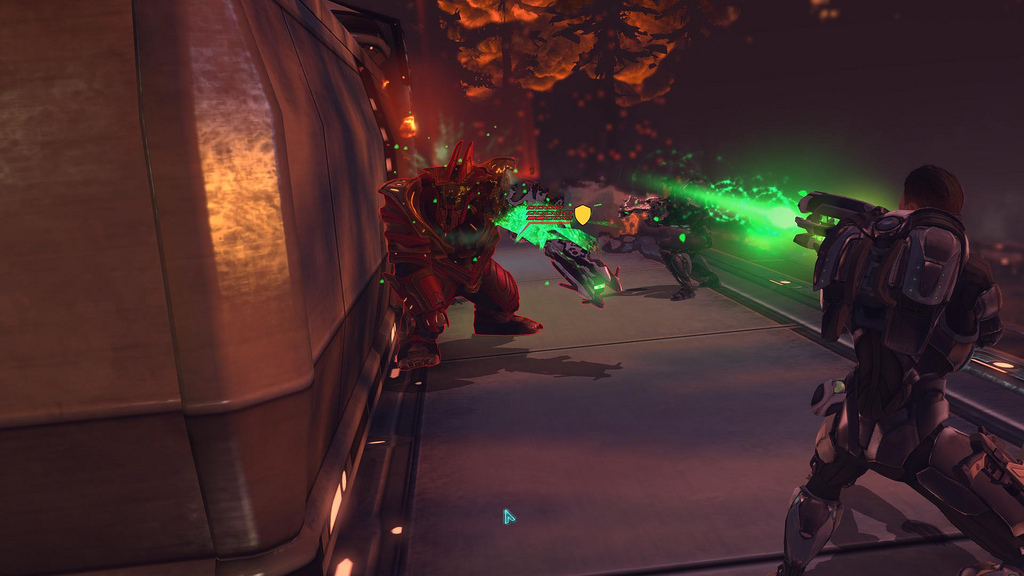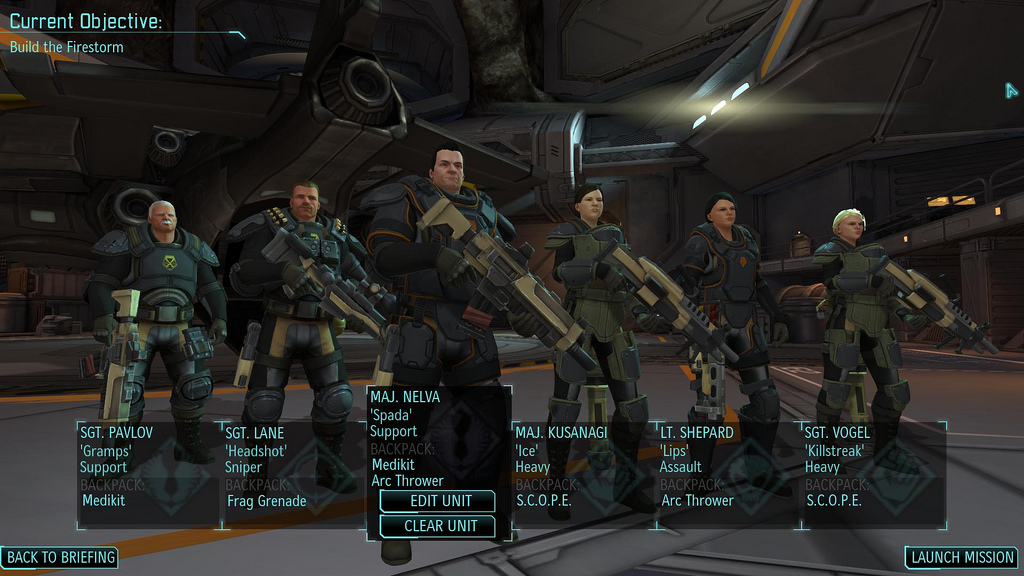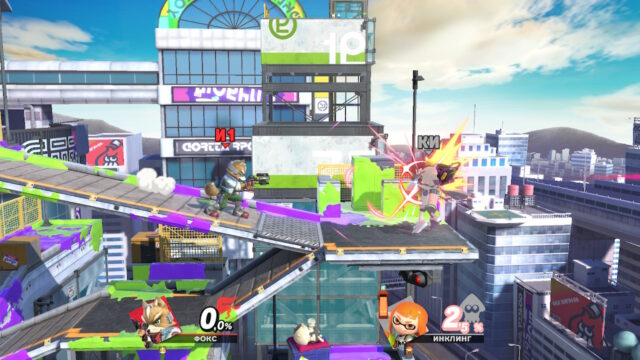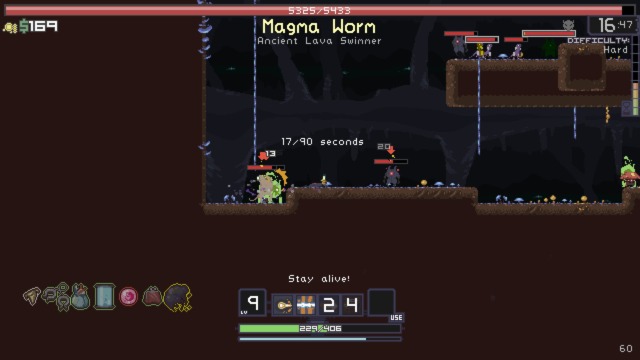XCOM: Enemy Unknown Review

Boldly buy XCOM, it’s a fantastic game. I know it’s the season of “big” games right now, but it’s so good that I’ve been playing it non-stop for the past 3 days, and I have no desire to stop. XCOM immerses you in a world of science fiction reminiscent of B-movies, with toy soldiers and a rich, yet streamlined strategy – a world that pays great homage to the original 1994 game. Remake? Reimagining? Either way, the classic has been resurrected and XCOM is with us again.
You play the role of the commander of the tactical group XCOM, defending Earth from alien invasion, and the responsibility of overall management of the organization and commanding in ground battles falls on your shoulders. The combination of genres remains unusual even after 18 years, but the system works excellently thanks to the many points of intersection between these two tasks, the most obvious and undeniable of which is the development of XCOM soldiers – turning ordinary soldiers into fighters with psychic abilities, clad in plasma, directly depending on your choice of research and production.
The base management system owes much to both the original X-Com and Metal Gear Solid: Peace Walker and its Mother Base. The base boasts a luxurious 3D display of constructed objects and takes you from room to room as you delve into the options menu – researching alien technologies, expanding global support, and training soldiers. There’s always something new and interesting here, and there’s always a choice that requires careful consideration.

In particular, when it comes to contacts. Management is not only about balancing the budget, but also about maintaining balance on the global map – if the planet is attacked in three different places at once, you can only deploy to one zone. Successful completion of a mission reduces the level of panic in the population, but only in that country. In the rest, mass panic will grow, and if it reaches a certain limit somewhere, XCOM will lose that country. It is relatively easy to maintain calm among people on Normal difficulty, as long as you don’t fail missions multiple times in a row, but on Classic, everything is completely different. Which country should XCOM never lose under any circumstances? In Ironman mode, when the game is tied to a single autosave, you will definitely have to think about this.
The campaign is built around countering threats, which involve an element of randomness – there are missions to prevent population capture, survey crash sites, disarm bombs, and rescue VIPs. But the main rule is killing aliens. Turn-based combat is the core essence of XCOM. The three-dimensional locations are mainly observed from an isometric perspective, but during aiming, the camera lowers, reminiscent of the VATS mode from Fallout 3. Close-ups are also used when soldiers take cover or a new cluster of enemies is discovered, and despite the turn-based nature remaining, it adds a dynamic element to the measured tactics.
Levels are chosen from a fixed set of maps, with multiple layout and cover options, but what really makes them different is the placement of enemies. Enemy forces can be anywhere in all missions.

They did not come in peace.
Aliens in XCOM are conquerors of everything and anything, with absurd bulging heads like in old horror movies. They act in groups with different combat styles. Sectoids, the earliest opponents, are weak individually, but in large groups they strengthen each other and demolish everything in their path. Berserkers will immediately charge at anyone who shoots at them, disrupting tactical plans and forcing immediate attacks for victory (or facing dire consequences). Others will flank from the air, unleash devastating laser bombardments, disembowel your soldiers, and lay eggs in their twitching bodies.
In other words, they have one common characteristic – they are capable of rapidly destroying XCOM forces. Being under fire is always unpleasant, but what truly makes the aliens terrifying is their efficiency in detecting units that haven’t hidden in time – or the super-unit around which your entire strategy is built. In XCOM, the cause of your death becomes an ill-considered turn around a corner, overly fast movement, or a risky shot that misses the target. The fog of war does not conceal objects such as vehicles and walls, but if you decide that the path ahead is clear because of it, it will be a straight road to the grave. Moving forward must be done slowly, carefully, surveying everything around you with the ability to “Overwatch” to immediately spot an enemy attacking from cover. The ability to instantly eliminate lone soldiers and attacks in inconvenient combat positions make the aliens even deadlier when you can’t see them.
The sense of tension is manifested in the fact that soldiers can be subject to panic. The “Will” parameter shows how well each member of the group keeps themselves together, and each of the soldiers can break under strong pressure. When a soldier panics, he or she performs a random action (including shooting at enemies or allies) and skips a turn.

Once I had to infiltrate the control center in a crashed UFO. Two assault soldiers, two snipers guarding the door, and a support class. I opened the door, and the support class fell under a hail of laser beams – one of the assault soldiers panicked and rushed inside, where they quickly dealt with him. His comrade, seeing this, also lost his composure and charged forward. He died quickly, the enemies took control of one of the snipers’ minds, and the other finally moved and simply sat down, muttering something. None of them returned home. Of course, panic doesn’t always turn into something as dramatic, but such moments are worth a lot.
Moreover, the death of soldiers brings certain inconveniences. Over time, soldiers level up, just like in the original, progressing through skill trees with branching paths. Skills are built around quick cooldowns and long-range usage – assault soldiers can shoot immediately after dashing, and snipers can use throwing scanners and make multiple shots per turn. Small bonuses increase with rank, significantly increasing the value of experienced soldiers compared to new recruits, so losing a squad – or even losing one soldier – weakens XCOM more than just for one mission. As the campaign progresses, access to barracks upgrades and improved weapons becomes available, which helps mitigate the losses of veteran deaths, but they will still be felt. Rest in peace Marco “D.O.A.” Bettini, who took 71 enemies with him.
The abilities of XCOM soldiers and the innate skills of aliens are perfectly balanced, and the full range of situational moves is fully revealed in multiplayer. Each player receives an equal amount of points to acquire soldiers and then assembles a team from any units available in the campaign. You can take one Alien and a couple of sturdy infantrymen to sow chaos in your path, pitting enemies against each other. Or three Sectoids mentally linked to three snipers to create powerful glass cannons. Psychic abilities, which unlock closer to the end of the game, are particularly useful here: causing enemy troops to panic never gets old. The mode may seem slightly simplified because it lacks any long-term structure, but that doesn’t negate the fact that individual multiplayer missions can be simply stunning.

Still, XCOM is focused on single-player, and that’s right. The scenario (by Scott Wittbecker) pleasantly surprised me: an energetic mix of military terms, scientific jargon, and vulgar dialogues in combat. The worthy campaign is challenging enough on Normal and significantly harder on Classic – and both difficulties are incomparably changed with the Ironman mode, which is designed to discourage you from saving. The last level of difficulty, Impossible, fully justifies its name.
This is a delightful game. So much diligence has been put into its atmosphere, into the infinite number of details that make the game incredibly deep and its world alive: random conversations overheard while managing the base; the loading screen that allows you to watch soldiers in a transporter fidget and shift in anticipation of arrival; touching touches like a soldier receiving a nickname like “Longshot” or “Odin” after a few missions; a memorial room to honor the memory of fallen soldiers, with pinned photographs on a corkboard – and the fact that when you enter this room, a march starts playing on the violin.
Towards the end of the campaign, there is a direct reference to the original game designers, the Gollop brothers, accompanied by the achievement “On the Shoulders of Giants”. It’s a beautiful moment, a welcome nod across generations – from one set of developers to another. Now they have something in common. Both of them, at their time, made a fantastic game called XCOM.
Share
Discuss
More Reviews





